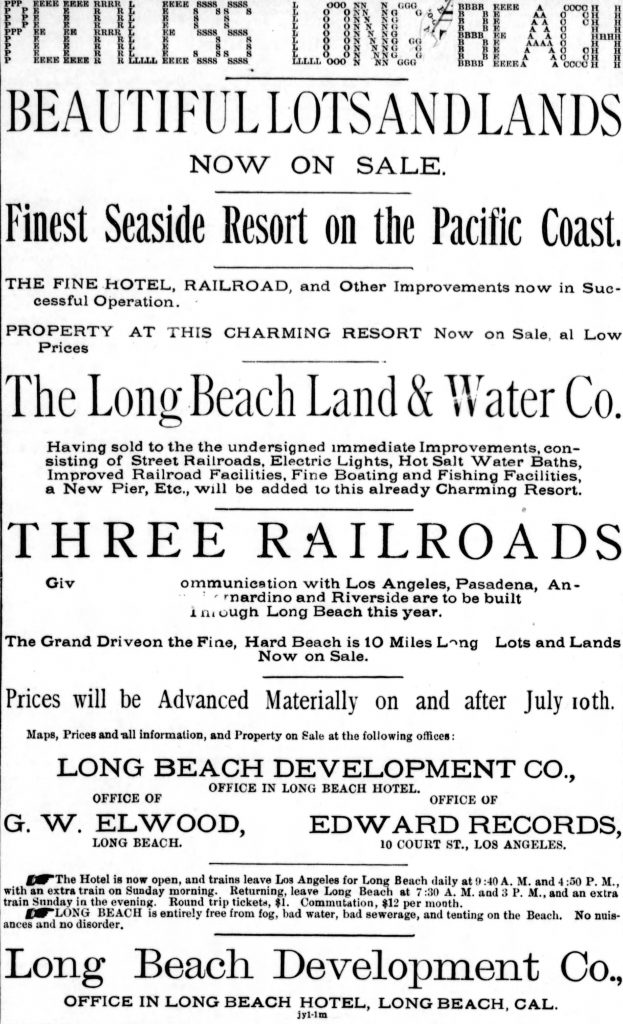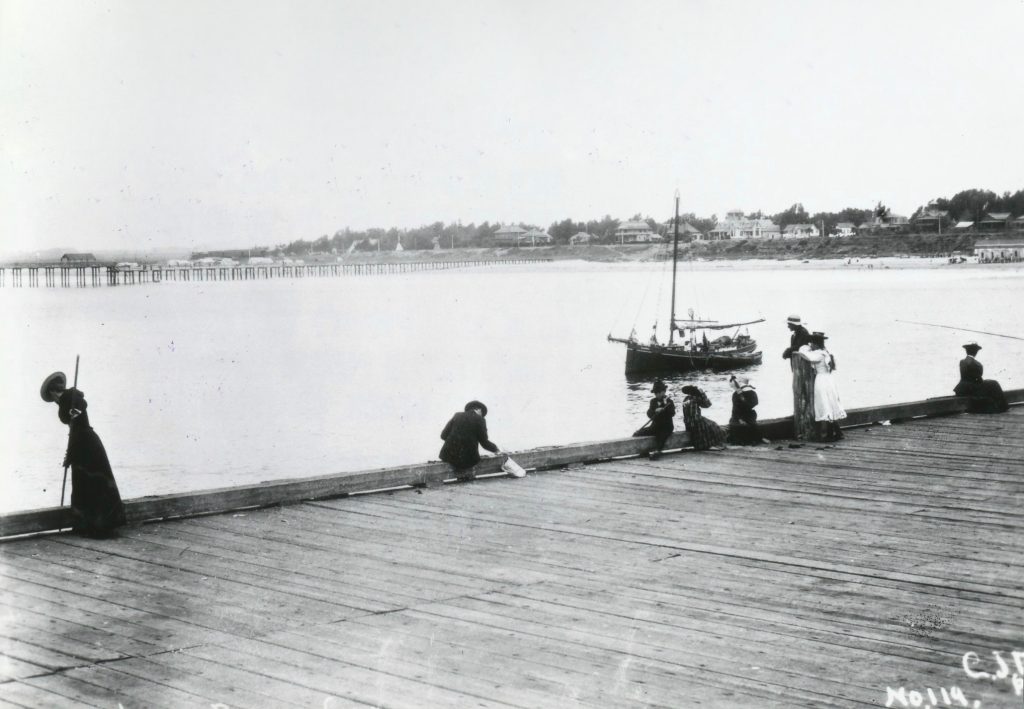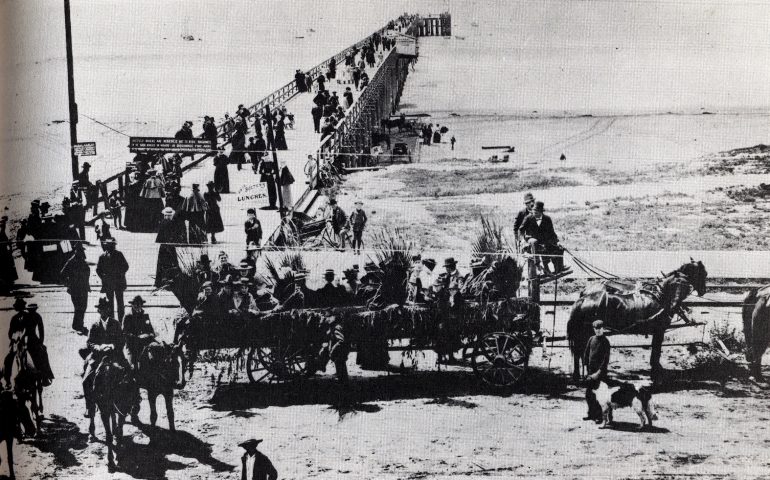In the 1870s, 4,000 acres of the local Rancho Los Cerritos (mainly used to raise sheep) was sold to William E. Willmore, who subdivided the land in hopes of forming a new community, one he would name after himself—Willmore City. Unfortunately for him, the real estate venture failed and in the 1880s he was bought out by the Long Beach Land and Water Company. They renamed the area Long Beach, improved the water system, instituted a horse-car line, connected the town with the Wilmington line of the Southern Pacific in 1888, built a hotel—and built a pier.

Advertisement for the Long Beach Development Company
The pier committee, with a staff of experts, are to meet here on Tuesday, March 24th, to take soundings and measurements, to be able then to commence construction of the pier forthwith. The new resident in the county, General Edwin Ward, of San Gabriel and Pasadena, is the moving spirit, he having acquired lots and shares in the Long Beach Land Company. —Los Angeles Times. March 24, 1885
The pier built by the water company would be the first of several in the city. It was the Magnolia Avenue Pier, built in 1885 for the princely sum of $4,000. The pier was 700-foot-long, 32-feet-wide and included an underwater light for night fishing.
Historians reported that the opening day celebration was attended by more than 125 carriages that participated in a large parade.
The pier, according to records, quickly proved very popular with the fisherman who caught all of the locally common smaller species—perch, croaker, mackerel, bass, pompano and smelt as well as larger species—yellowtail, barracuda, halibut and even an occasional giant (black) sea bass (known as jewfish in those days) from its deck.
A 632-pound jewfish (giant sea bass), caught by William Schilling and his son, was reported from the pier but it’s unclear if the fish was actually caught on the pier or on a boat from the pier.

Unfortunately the pier began to weaken after only five years of use, was declared unsafe, and the shore end of the pier was removed in 1892 effectively ending its life as a fishing pier. There it set, wooden planks and narrow pilings, until the infamous Artic storms of 1900 washed away everything except some of the barnacle encrusted pilings.
By that time Long Beach had become a popular destination for those seeking fun and sun in a seaside setting and both the Magnolia Avenue Pier and the pier that replaced it, the first Pine Avenue Pier, were important attractions for visitors to the sea.
Ironically, in 1951 a new “Magnolia Ave. Pleasure Pier” was built. However, it was simply a 480-foot-long pier/boat launch for small boaters. It was built at a cost of $74, 305. The U.S. Navy acquired the site in 1955 as a landing site and eventually built a pier and seven docks. However, the city of Long Beach reacquired the site (1958-1960) and filled it in by dredging and reclamation between 1960 and 1964.

When I was in the Navy (1956/1960) our home port was Long Beach. I remember clearly the Magnolia Street Landing as it was know by most navel personnel. I don’t know if that was the same pier as the one written about in this article. Just next door to the pier was the “Pike” which had been there for many years.
Interesting is that there is a Magnolia Blvd fishing pier in Long Beach, NY.
Yes, interesting.